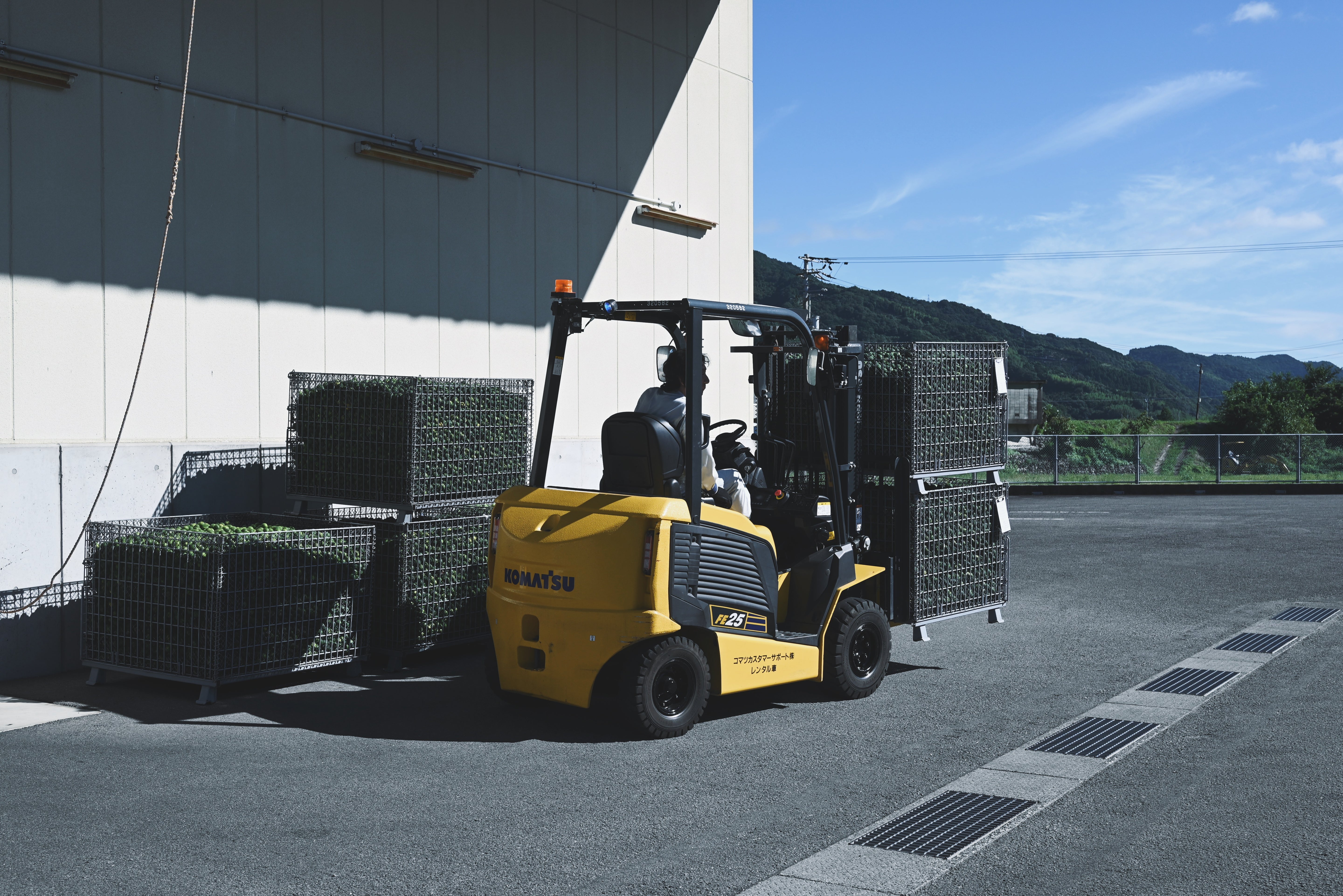
Greetings
Since our founding in 1946, we have made it a priority to act as a bridge between our customers and the local community. We hope that local producers will be able to promote their produce nationwide through us, and that they will be able to make a living. And we work hard every day to ensure that our customers can enjoy the genuine beauty of Tokushima and be delighted with it.
In recent years, we have proactively responded to issues that the entire community must address, such as environmental problems and an aging population, and our highest priority is to build a society that provides security and hope to the next generation. We are also working on a business plan that looks ahead to the local community 100 years into the future.
In this modern age where we are bombarded with devastating news, we aim to be a company that treasures the traditional Japanese spirit of compassion and consideration, and that moves and develops alongside the local community.
Representative Director Manabu Yoshino
"We will introduce the flow of a lean, systemized factory."

#1 Receiving and Inspection
All inspections are done by hand,
Check the color of the product.
Check each product one by one
Carefully check the stems and select small fruit.
Additionally, we thoroughly check for residual pesticides from our suppliers.

1. From a farmer in Katsuura County:
When the harvesting season comes around, queues form to receive the raw materials.
(September period)

2. We also receive raw materials from JA and other businesses outside the town.

3. Fresh ingredients are dropped onto the conveyor.

4. All incoming raw materials are carefully inspected by hand.

5. After inspection, the raw materials are thoroughly washed.

#2 Squeezing and filling
In the thoroughly streamlined factory,
With our special manufacturing line,
We achieve short delivery times by eliminating waste in each process, from the delivery of raw materials to the delivery of finished products.
The process from washing to squeezing the delivered raw materials is systemized.
The bottles we deliver are also thoroughly washed.

6. The thoroughly washed raw materials are
The juice flows along the conveyor to the juice extractor.

7. The ingredients are thoroughly squeezed out using an automatic juicer.

8. After squeezing the juice with a juicer, the juice and skin are separated.

9. Freshly squeezed juice (first squeeze) is collected.
Thorough streamlining has achieved high quality
The current factory has thoroughly streamlined the flow of the production line from the design stage onwards.
We eliminate waste to the utmost extent possible at each process from the delivery of raw materials to the delivery of finished products.
Processes 50 tons of fruit per day (8 hours operation),
The 1.8L bottle can produce 8,300 bottles of juice.
After production, the products are immediately stored in a refrigerated warehouse on the premises,
All products can be stored while maintaining their high quality.







Equipment overview
Fruit juice extractor Fruit juice tank Cubitainer Filling machine Receiving and sorting equipment Bottle capping machine Rinser Clean room Air conditioner Boiler equipment Inner and outer skin separator (rotary slicer)
Washing and drying equipment Vibration filter Weighing machine Filling machine Cap sorting and supplying machine Plate sterilization Cooling device Cutting unit Refrigeration machine






Contributions to the environment and local community
A rich natural environment for future generations.
Inheriting a safe local environment is
It is our mission as people living in the present.
We must use limited resources and energy carefully and reduce the burden on the environment.
The amount of "pomace" produced during fruit juice extraction is:
In Tokushima Prefecture, the annual production is just under 4,000 tons.
This process is a major problem.
We were one of the first in the prefecture to tackle this issue.
We have started a compost production business using pomace as a raw material.
After squeezing the fruit juice, the pomace is transported to our own compost shed,
We manufacture and sell the organic fertilizer "Super Green."
The compost produced is returned to local farmers,
This creates a sustainable cycle in which the water can be used to produce better fruits and crops.
Currently, local farmers are aging and the birth rate is declining.
Fruits for processing that can be produced with minimal effort (ingredients for fruit vinegar)
Farmers are grateful for this sales channel and are pleased with it.
ABOUT
Company Profile
[Company name]
Awa Vinegar Co., Ltd.
【location】
〒771-4303
Tokushima Prefecture, Katsuura-gun, Katsuura-cho, Oaza Ikumi-cho, Kaminoki 52-1
TEL: 0885-42-2800
FAX: 0885-42-2600
[Representative]
President and CEO Manabu Yoshino
[Foundation]
January 1946
[Establishment]
January 1971
[Capital]
10 million yen
[Bank]
Awa Bank, Tokushima Taisho Bank, Mizuho Bank, Shikoku Bank
[Business details]
Fruit vinegar (sudachi, yuzu, yuko juice, orange juice)
Manufacturing and sales of organic fertilizers
[Land area]
5,280㎡
[Building area]
[Factory] Steel-framed, two-story building, total area 1,650 m2
[Refrigeration building] Steel frame, 1 story, total area 330 m2
100,000 bottles (1 sho bottle) can be kept cold
[Manufacturing site]
Address: 7 Ota, Oaza Ikuma, Katsuura-cho, Katsuura-gun, Tokushima Prefecture
[March 1946 (Showa 21)]
Yoshino Kohei founded the company as a citrus wholesaler.
[September 1950]
Started hand squeezing of citrus fruits Sudachi, Yuzu, and Yuko
[January 1971]
Kanekichi Sangyo Co., Ltd. was established (fruit vinegar manufacturing and sales division, fuel sales division).
[May 1972]
Constructing a citrus juice factory
[November 1981]
Small bottle filling equipment completed (starting nationwide expansion of small bottled Sudachi and Yuzu vinegar, instead of only 1.8L bottles)
[May 1983 (Showa 58)]
Additive-free diluted health drink "Manyo no Sei / Sudachi Honey, Yuzu Honey"
Started manufacturing and selling
[August 1986]
Constructed the second citrus factory (equipped with 5 juice extractors).
[February 1991]
Manabu Yoshino appointed as representative director. Awa Vinegar Co., Ltd. was established as a sales company.
[August 1991
Constructing a refrigeration facility (ensuring thorough quality control by refrigerating the juice immediately after squeezing it)
[August 1994]
Second refrigeration facility construction
[April 2001]
Construction of a compost shed (in order to proactively address the environmental issue of waste disposal after juicing, we are building a compost shed to reuse and compost the waste.)
Started production and sales of "Super Green," a compost made from recycled citrus pomace.
[November 2003]
From the Tokushima Prefecture Organic Agricultural Products Certification Association, a non-profit organization:
Obtained organic certification (as Kanekichi Sangyo Co., Ltd.)
[August 2005]
The head office factory was relocated to Katsuura-cho, Oaza Ikunai, Kannoki (equipped with clean rooms and dedicated to producing safe and secure products).
[February 2006]
Started squeezing juicing of oranges Started production and sales of Manyo no Sei/Odaidai Honey
[May 2009]
The company name was unified to Awa Vinegar Co., Ltd.
Consolidated into fruit vinegar manufacturing and sales division
[January 2014]
From the Tokushima Prefecture Organic Agricultural Products Certification Association, a non-profit organization:
Obtained organic certification (as Awa Vinegar Co., Ltd.)
[November 2018]
Received the Tokushima Prefectural Governor's Award (for being an excellent food hygiene facility)
[March 2020]
Obtained Tokushima Prefecture HACCP certification


